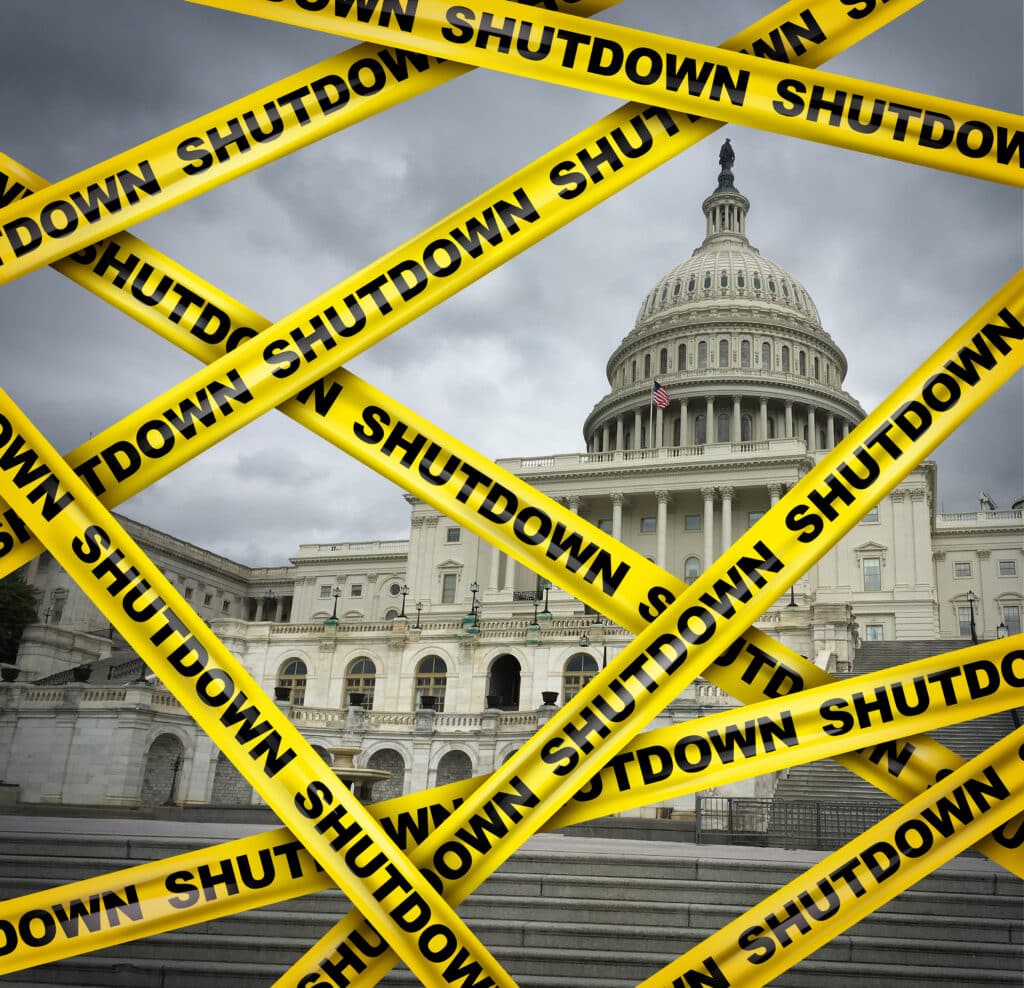Key Points
- A potential government shutdown could delay the September jobs report, complicating Federal Reserve monetary policy decisions.
- Economists estimate a shutdown could increase the unemployment rate by 0.1 to 0.2 percentage points and reduce fourth-quarter GDP growth by 0.1 to 0.2 percentage points per week.
- Unlike previous shutdowns, this one could have a more extensive impact on economic data releases because appropriations bills have been enacted for fewer agencies.
Government shutdowns are rarely big enough events to cause lasting damage to the U.S. economy. But that doesn’t mean the latest congressional impasse over spending couldn’t affect growth and monetary policy.
If congressional leaders can’t agree to pass even a short-term funding measure by 12.01 a.m. Eastern on Wednesday, the government will shut down. That deadline is particularly problematic for the publication of economic data, especially the jobs report for September, which is scheduled to be released by the Bureau of Labor Statistics on Friday. The last time a shutdown held back a jobs report was in October 2013.
Delays in that report and other data could create challenges for Federal Reserve officials. The bank is always reliant on economic statistics in making its calls on monetary policy, but the numbers are especially important now because the risks of higher inflation and a weakening job market are so closely balanced.
“An increasingly data dependent Federal Reserve with limited visibility into the September data increases the probability of an October pause,” writes Mike Reid, senior U.S. economist for the Royal Bank of Canada.
President Donald Trump is set to meet with congressional leaders on Monday afternoon, but BNP Paribas Securities senior economist Andrew Husby writes that the odds of a shutdown are “effectively a coin-flip” at this point. There are no indications about how long a shutdown might last.
While the longest U.S. federal government shutdown took place during Trump’s first term in office, starting in December 2018 and lasting 35 days, most are much shorter. Of the 20 government shutdowns since 1977, only seven have exceeded the average length of eight days.
Economic data continued to be published during the 2018-2019 shutdown because budgets for agencies including the Department of Labor had already been enacted. The disruption this time would be more “extensive” because Congress hasn’t passed appropriations bills for more agencies, write economists from the Wells Fargo Investment Institute.
“In the event of a federal government shutdown, the Bureau of Labor Statistics (BLS) will suspend data collection, processing, and dissemination,” an agency spokesperson told Barron’s via email on Monday. “Once funding is restored, BLS will resume normal operations and notify the public of any changes to the news release schedule on the BLS release calendar.”
The Metropolitan Area Employment and Unemployment release for August would be published on Wednesday as part of the agency’s shutdown process, it said.
The delay of economic releases would likely last slightly longer than the shutdown. A prolonged government closure could also jeopardize the Oct. 15 release of the latest consumer price index data and the September retail sales report from the U.S. Census Bureau.
If there is just a short, technical funding lapse that ends within a day, the September payroll report could still be released as scheduled, on the first Friday in October, Husby writes. When the government shut down for 16 days starting on Oct. 1, 2013, a Thursday, the BLS released the employment report on Oct. 22, he said. Husby only sees a “small likelihood” that a shutdown would last long enough to prevent the report’s release before the Federal Open Market Committee’s next meeting on Oct. 28-29.
If the BLS doesn’t publish its employment data on Friday, the ADP National Employment Report, scheduled for release on Wednesday, will likely gain outsize significance in the interim. The ADP report would be the only gauge of conditions in the broader labor market for September.
There are also potential implications for employment and growth. About 900,000 federal employees—about 40% of the workforce—would be furloughed if the government shuts down on Wednesday, estimate Goldman Sachs economists Alec Phillips and Ronnie Walker. Paychecks for all federal employees would be delayed until after Congress votes to restore funding or passes a continuing resolution, though in past government shutdowns, furloughed workers were still counted as employed in the monthly establishment survey.
Many government contractors, however, may be forced to simply go without pay for the duration of the shutdown with no reimbursement.
“The overall fiscal effect of a shutdown would be small, as benefit and interest payments would continue along with tax collections and other revenue functions,” the Goldman economists note. “That said, the administration has some flexibility in determining how to operate during a shutdown and could differ from the approach prior administrations have taken.”
Phillips and Walker expect that October payrolls will be largely unaffected, but that depending on the duration, the unemployment rate could be pushed up by 0.1 to 0.2 percentage points. If a shutdown does last more than a couple of weeks, other October economic data and releases could be affected as well.
Initial claims for unemployment benefits could also rise. And based on past shutdowns, Nomura’s chief economist, David Seif, calculates that there would be a drag of 0.1 to 0.2 percentage point per week on inflation-adjusted growth in gross domestic product for the fourth quarter.
In addition, Seif says, the Trump administration’s threat to lay off federal workers in the event of a shutdown could have a “more severe near-term impact” on public-sector employment in the October payroll data. Economists are already expecting a significant loss of public-sector jobs as a result of deferred resignations earlier in the year.
The Office of Management and Budget released a memo last week instructing agencies to prepare to permanently reduce their workforces. While those terminations would likely be challenged in the courts and some people would be rehired after the government reopened, the layoffs could make the situation look worse for the short term.
So while the U.S. economy is unlikely to falter in the midst of a shutdown, there are still consequences. The current complicated economic situation likely would become even more complex.
Read the full article HERE.


